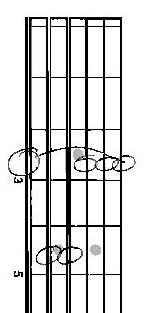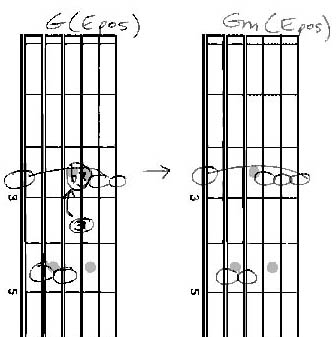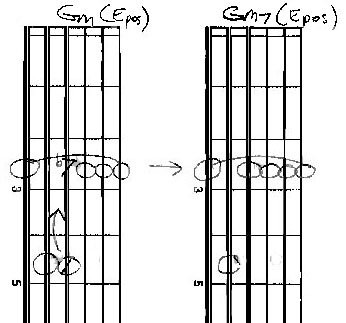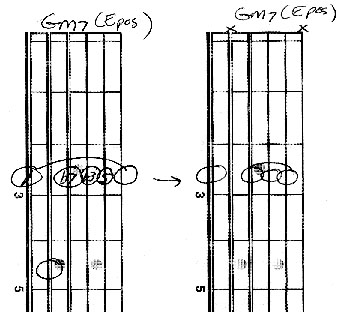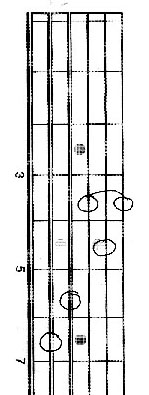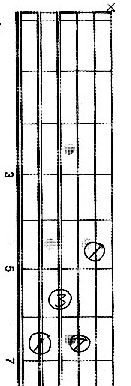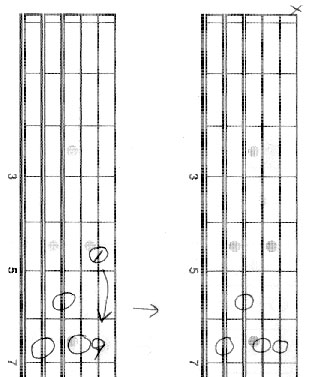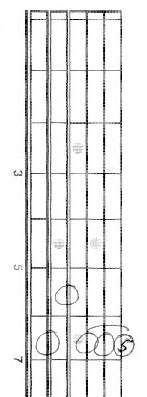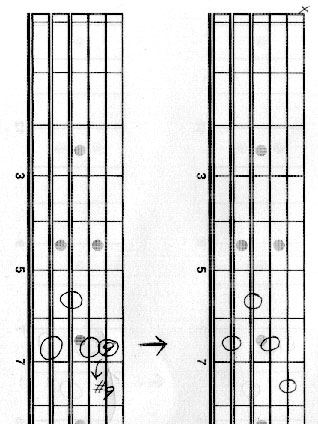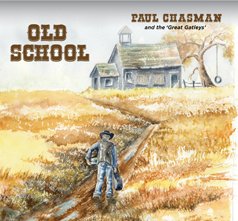CAGED Chords - July 20, 1999
 Hello,
readers. Hello,
readers.
My intention in this web site is to write a column every two weeks. Up until lately, I have been pretty consistent, but this last month or so, life has gotten in the way. First, the cello/guitar suite that I have been writing on my back burner for the last year, jumped to the front burner and demanded all my attention. Each time I entered my studio, I had a choice: cello suite or web column? It was no contest. Then I had to go out of town for a while. The day after Anna and I got back, we added two horses to our family. Then the big decision: ride my new horse or web column? Tough one there. Anyway, my apologies for my absence and I will try to get a few more in before I get too busy again. A great deal of interest has been expressed about my articles on the CAGED system. I would like to give some background, answer some questions, then delve a bit further. My understanding of what I call the CAGED system evolved from the time I started to play guitar, and I knew my basic first position chords. Over time, I came to understand how these chord forms were chromatically moveable and how they were interconnected. Because I first learned chords on the guitar, it was natural for me to use the basic shapes as a reference point for whatever I did. When I began teaching in the mid-60's, I taught what I knew about these moveable, interconnected chord forms. As my understanding became more sophisticated, so did the system that I taught. One day in 1976, a student of mine came to his lesson and said, "I figured out that if you start the order of positions on 'C,' it spells: CAGED." From that day on, I have referred to my system as the "CAGED System," and I have used the word, CAGED, as a handy hook for people to remember the order of positions. It comes as no surprise to me that a number of readers have heard of the CAGED system through other sources. With all the guitar players out there, it would surprise me more if nobody arrived at the same conclusions that I have. Also, I have taught the CAGED system for so long, to so many people, that I know it has been passed on. I honestly don't care who gets credit for it. The information is in the air and is available to all. The only thing that matters is the music that comes out as a result of the information. But the CAGED system is a way of looking at the guitar neck that I have arrived at independently. For me, it has evolved out of thirty-nine years of playing and teaching (God! That makes me sound old!). I have had a number of questions about application of the
CAGED system. One good place to start is with what you already
know. If you begin with the premise that anything you do on
the guitar relates directly back to CAGED, then you may want
to examine the random chords, scales, and licks you know, and
see how they fit into the pattern. Let's look at chords. At
the most basic level, an example might be Gm:
My point is: If you have a lot of miscellaneous stuff that you know on the guitar, try to put it into the context of the CAGED positions. You may be surprised at how much more of an integrated overview this will give you. Have fun. I will try to get back to you in a couple of weeks. BACK TO ARCHIVES |

